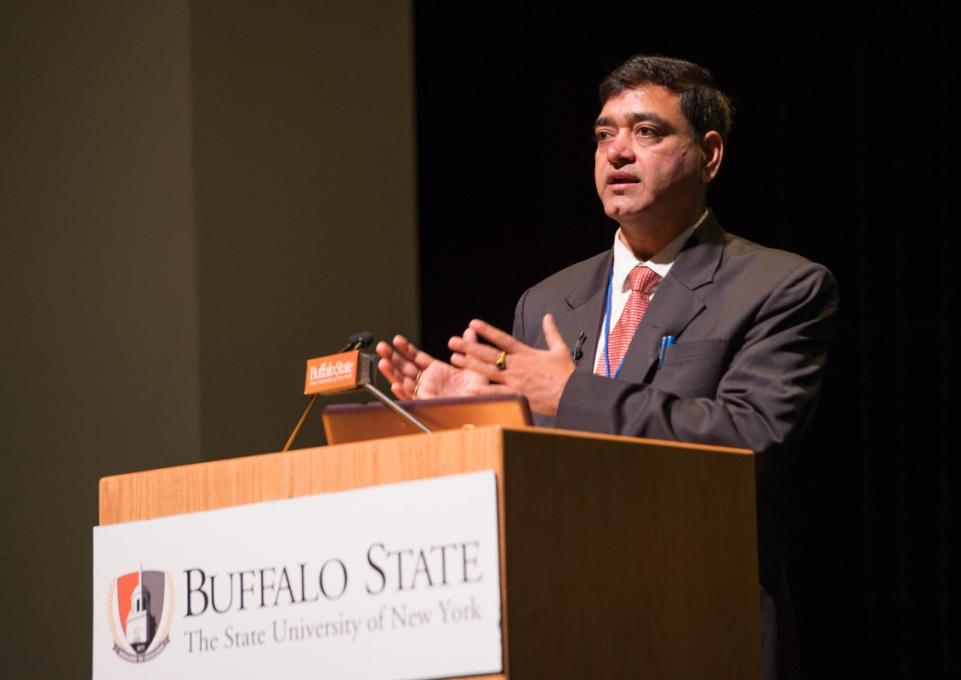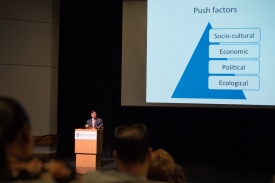
In his opening talk at the Human Trafficking: Strategies for a Solution Conference held at Buffalo State, Veerandra Mishra, executive director of the Ministry of Youth Affairs and Sports in India, argued that the widely accepted definition of human trafficking needs to be reconsidered.
“People often refer to human trafficking as modern-day slavery,” Mishra said, “but that suggests chains, whippings, and physical coercion. That kind of force and brutality is not necessarily always present in global trafficking today.”
Mishra’s presentation, "Human Trafficking: Beyond Conventional Understanding," referred to the United Nations Palermo protocol, which was completed in 2000. “More than 15 years later,” he said, “we need to expand the definition of human trafficking to recognize more dimensions.”

In particular, Mishra noted that not all human trafficking involves moving its victims from one place to another. He presented the film Do I Have a Choice to illustrate how generations of women have been coerced into prostitution within one community in India. The film depicts women being forced into these difficult lives by “push” factors such as sociocultural and economic factors rather than by brutality.
Many victims are made vulnerable to trafficking by such factors, according to Mishra. Eliminating the vulnerability of the victims of human trafficking—which he labeled as one of the three most profitable enterprises of organized crime, along with drugs and arms trade—requires prevention through means of social justice.
Mishra’s appearance at Buffalo State was just one stop on a two-week visit to Canada and the United States. He spoke in Toronto before coming to Buffalo; he will also visit Washington, D.C. to meet with policy makers and speak at several colleges to raise awareness of the dimensions of human trafficking, in which he included agricultural and domestic labor, medical trafficking for the purpose of harvesting organs, and child soldiers.
William Wieczorek, director of the Institution for Community Health Promotion, closed the presentation with a reminder that trafficking is as real in Western New York suburbs as it is in some of the poorest countries on Earth. “An opiate addict in Orchard Park is vulnerable to the promises and threats of would-be traffickers, too,” he said. “We can’t think of human trafficking victims as ‘those people.’ ‘Those people’ are us.”
Read more
President's blog: Bringing Human Trafficking out of the Shadows
In the News: Buff State Hosts Special Human Trafficking Conference (WIVB.com)
